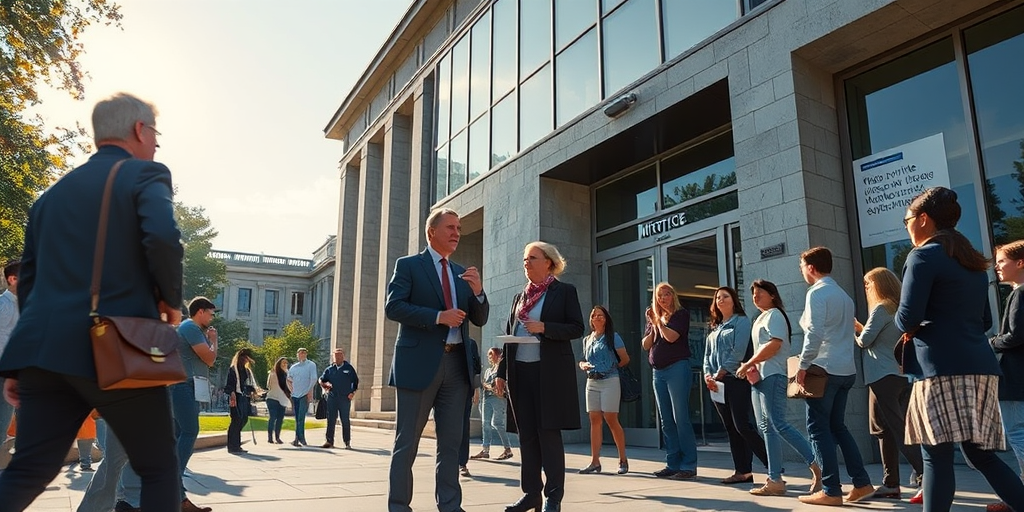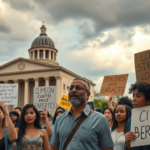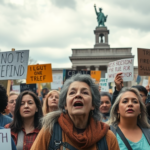MIT to Close DEI Office Amid Broader National Trend
The Massachusetts Institute of Technology (MIT) has announced plans to shutter its Institute Community and Equity Office, highlighting a significant shift in its approach to diversity, equity, and inclusion (DEI) initiatives. This decision places MIT among a growing number of academic institutions scaling back DEI efforts, a trend amplified under the Trump administration’s scrutiny of such programs.
MIT’s Strategic Shift in Diversity Efforts
In a letter addressed to the MIT community, President Sally Kornbluth detailed the decision to close the DEI office, affirming the institution’s continued commitment to inclusivity. She noted that some of the office’s initiatives would be strategically transitioned to other departments within the university. This move follows an extensive internal review that underscored a need for reevaluating existing diversity programs, despite an expressed appreciation for their contributions.
This development coincides with rising political pressure on universities receiving federal funding to dismantle DEI initiatives. Institutions like Harvard University have also faced similar demands, reflecting a broader political push against DEI offices, which some view as unnecessary or even divisive.
Internal Reviews and Leadership Changes
MIT’s review process gained traction following the departure of Karl Reid, the institution’s first vice president for equity and inclusion. Reid’s brief tenure, lasting just over a year, prompted President Kornbluth to form a working group of senior faculty and staff. This group was tasked with reassessing MIT’s DEI strategies, resulting in recommendations presented to the university’s academic council.
The closure of the DEI office will also conclude the role of vice president for equity and inclusion, further signaling MIT’s intention to overhaul its approach while still prioritizing community diversity and support. “Our success depends on attracting exceptionally talented people from all backgrounds, ensuring they feel welcome and supported,” Kornbluth emphasized in her statement.
Impact on Local and Academic Communities
The decision to shutter the DEI office has broad implications for the MIT community and may contribute to shifting dynamics within nearby educational institutions. As MIT embarks on a new path, it underscores the importance of crafting diversity efforts that resonate within both academic and local contexts.
For students, faculty, and staff, the transition presents both challenges and opportunities. A new standing committee dedicated to community building and support will replace the existing office, involving diverse representation from faculty, students, and staff—a move designed to maintain MIT’s inclusive mission.
Alexis Chen, an MIT senior studying public policy, expressed cautious optimism. “While it’s disheartening to see the DEI office close, the commitment to community dialogues and support structures could lead to more sustainable change if executed thoughtfully,” she commented.
Connecting with Broader National Trends
The trend of modifying or dismantling DEI programs is not isolated to MIT. Many higher education institutions nationwide have faced similar pressures to reevaluate the efficacy and necessity of such initiatives against a politically charged backdrop. The Trump administration’s directives have compounded these challenges, leading to increased debate about the role of DEI programs in shaping academic environments and opportunities.
Dr. Laura Sanchez, a social policy expert, highlights the complexity of the situation. “Understanding the broader implications of these measures requires examining how academic institutions balance federal compliance with their values of inclusion and diversity,” she remarked.
Looking Ahead: Potential Future Implications
As MIT navigates this transition, its actions could serve as a blueprint for other institutions contemplating similar changes. Ensuring that diversity and inclusivity remain integral to institutional values will require continued dialogue and cooperation among all stakeholders. By fostering transparent communication channels, universities can address community concerns and align their diversity efforts with evolving needs.
Looking ahead, the effectiveness of MIT’s new structure will be scrutinized by peer institutions, policy analysts, and community advocates. One potential outcome is the emergence of innovative models for embedding diversity and inclusion into the fabric of university life, driven by broader societal shifts and expectations from the academic community.
Get Involved: Resources and Contacts
MIT community members and those interested in learning more about the transition can access resources via MIT’s internal communication channels and public forums. The newly established standing committee will facilitate discussions and gather input from staff, faculty, and students, ensuring that diverse voices contribute to shaping the university’s future inclusivity landscape.
For more information, MIT’s Office of the President provides updates and contact points for inquiries. Engaging with the process ensures that residents’ viewpoints are considered in shaping a more inclusive academic environment.
In closing, MIT’s decision to shutter its DEI office reflects both a response to external pressures and an internal recalibration of how best to support diversity and inclusion within one of the nation’s leading institutions. This development resonates with broader national discussions on the role and efficacy of institutional DEI efforts, emphasizing the need for innovative, localized approaches to supporting diverse communities.







